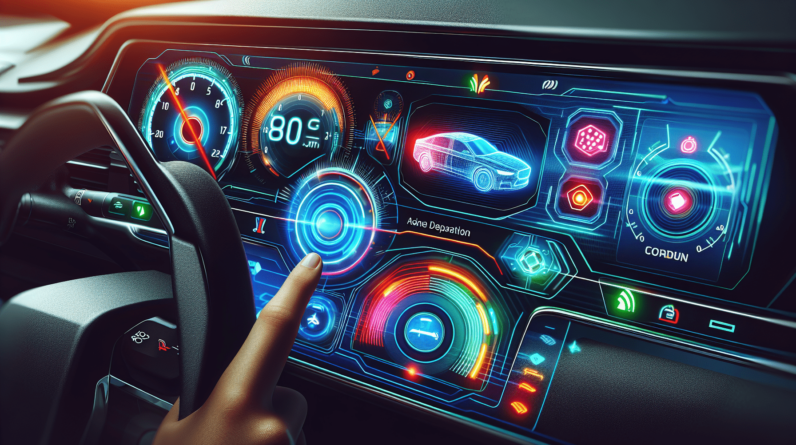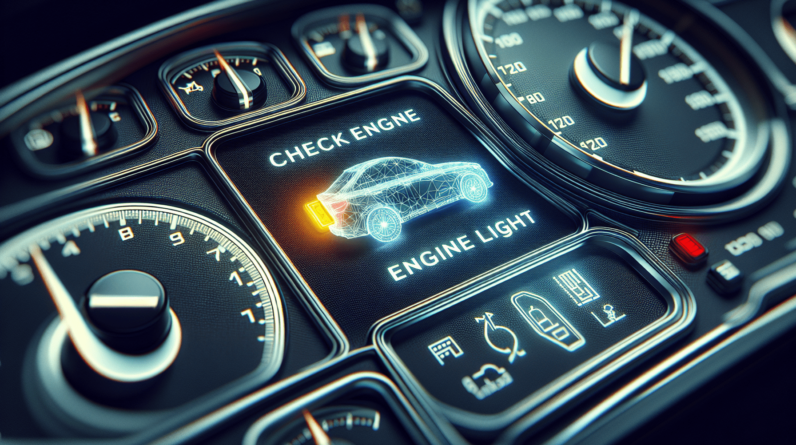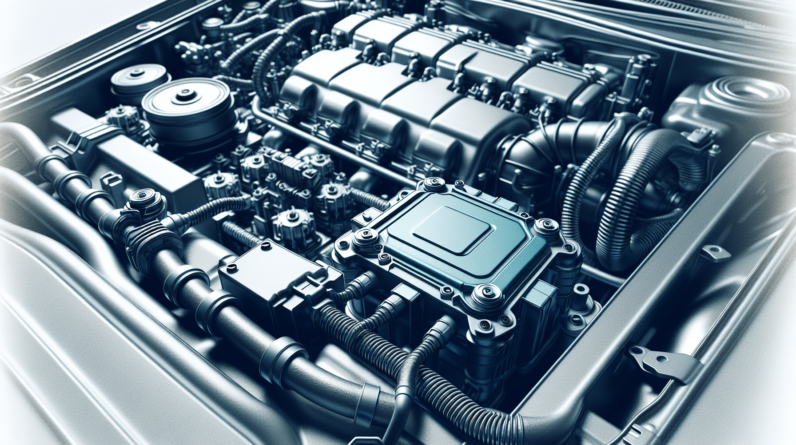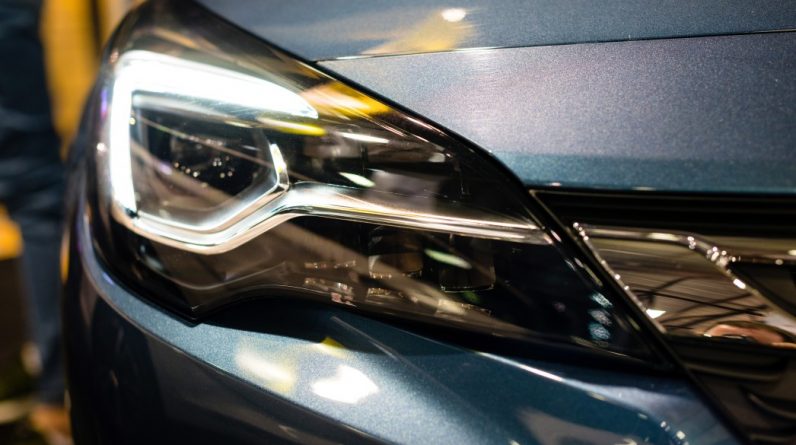
How often have you wondered if your Advanced Driver Assistance Systems (ADAS) are functioning correctly? Understanding when your ADAS needs calibration can be crucial for ensuring your vehicle’s safety and performance. In this detailed guide, we will walk you through everything you need to know about ADAS calibration, its importance, how to identify the signs that calibration is needed, and the procedures involved.
In Need of Auto Care? Dial 913-605-3126 for Remote or In-Shop Services!
What is ADAS?
ADAS stands for Advanced Driver Assistance Systems. These are electronic systems in your vehicle that assist drivers in driving and parking functions. Made possible by the extensive use of sensors, cameras, radars, and other technologies, ADAS applications range from simple alerts to complex systems that help in vehicle control.
Types of ADAS Features
ADAS encompasses a wide variety of features designed to enhance the safety and security of the vehicle and its passengers. Here are some common types you might find in modern vehicles:
| Feature | Description |
|---|---|
| Lane Departure Warning | Alerts you when the car is unintentionally moving out of its lane. |
| Adaptive Cruise Control | Automatically adjusts your vehicle’s speed to maintain a safe distance. |
| Blind Spot Detection | Warns you of vehicles or objects in your blind spot. |
| Automatic Emergency Braking | Applies brakes automatically to avoid a collision. |
| Parking Assistance | Helps you park the car by guiding you or controlling the car itself. |
| Traffic Sign Recognition | Detects and displays traffic signs for the driver. |
Understanding these features can help you recognize when something isn’t working as it should, thus making it easier to determine when calibration might be necessary.
What’s Calibration, Anyway?
Calibration in the context of ADAS involves realigning sensors, cameras, and radars to ensure they function accurately. Each component of your vehicle’s ADAS needs to be perfectly aligned and set to the manufacturer’s specifications. This is crucial for these systems to interpret data correctly and provide accurate assistance.
Types of Calibration
There are generally two types of ADAS calibration:
| Calibration Type | Description |
|---|---|
| Static Calibration | Performed in a controlled environment, usually involves special equipment and targets. |
| Dynamic Calibration | Done while the vehicle is in motion, requiring driving at specific speeds on certain types of roads. |
Both types of calibration have their own pros and cons and are often dictated by the vehicle manufacturer.
Why is Calibration Important?
You might be wondering, “Why go through the trouble of calibrating ADAS?” Well, the importance cannot be overstated:
- Safety: Inaccurate readings can lead to false alarms or, worse, no alarms in critical situations.
- Performance: Ensures that all features work optimally.
- Legal Compliance: In some jurisdictions, a properly calibrated ADAS is required by law.
- Vehicle Value: Maintains the value of your vehicle by ensuring all its features are working correctly.
The Signs Your ADAS Might Need Calibration
Understanding the signs indicating the need for ADAS calibration can save you a lot of trouble down the road. Here are some common indicators:
Warning Lights
Modern vehicles come equipped with dashboard lights specifically for ADAS. If one or more of these lights are illuminated, it’s a clear indicator something is wrong. Here’s a rough guide:
| Light Indicator | Possible Issue |
|---|---|
| Lane Departure Warning Light | The lane-keeping assist system may be malfunctioning. |
| Blind Spot Detection Light | Sensors in the rear-view mirrors might be misaligned or damaged. |
| Adaptive Cruise Control Light | The radar may need calibration or repair. |
Performance Issues
Unusual behavior in ADAS features can also serve as a red flag:
- Lane Keeping Assist: If the vehicle starts giving lane departure alerts when you are clearly within your lane, calibration might be needed.
- Adaptive Cruise Control: Sudden changes in acceleration or braking without reason can be a sign.
- Parking Sensors: Inconsistent beeps or failure to detect objects accurately might require attention.
Recent Repairs or Modifications
Even seemingly minor incidents can knock your ADAS out of alignment, here are some scenarios:
- Windshield Replacement: Most ADAS cameras are mounted on or near the windshield. A replacement often necessitates calibration.
- Collision Repairs: Any work involving the front, rear, or sides of the vehicle can misalign sensors.
- Suspension Work: Changes in the vehicle’s height can affect sensor alignment.
When to Get Your ADAS Calibrated
Understanding the right time to get your ADAS calibrated can be as important as recognizing the signs. Here’s a guideline based on different circumstances:
After a Collision
Even a minor fender-bender can move a sensor out of alignment. Always opt for a calibration check post-collision, regardless of how minor it seems.
Windshield Replacement
Many modern ADAS systems rely on cameras installed on the windshield. If your windshield is replaced, a subsequent ADAS calibration is typically required.
Sensor Replacement
If any of the sensors or cameras involved in the ADAS system are replaced, calibration is mandatory to ensure they function in sync with the rest of the system.
Suspension Work
Any alterations in the suspension system can fundamentally affect how your vehicle’s sensors read surroundings. Calibration ensures accuracy after such modifications.
Periodic Checks
Even if none of the above occur, it’s a good practice to get your ADAS systems checked periodically as a part of routine vehicle maintenance.
How Calibration is Done
The calibration process for ADAS can be intricate and requires specialized knowledge and equipment. Here’s a breakdown of how it typically happens:
Static Calibration
- Setup Environment: Specific lighting and space conditions.
- Position Targets: Placing targets at predefined distances and angles.
- Use Calibration Tools: Specialized tools and software calibrate the sensors and cameras.
- Verify Calibration: Ensure that the system is functioning accurately through test scenarios.
Dynamic Calibration
- Driving Conditions: Specific types of road and speed conditions.
- Software Synchronization: Onboard systems work in real-time to adjust and calibrate.
- Feedback Loop: Continuous checks to confirm the system’s alignment is correct.
Hybrid Calibration
Some vehicle models may require both static and dynamic calibration to be fully effective. The exact method can depend on the manufacturer’s specifications.
The Role of Professionals
Calibration should ideally be done by trained technicians. Given the complexity and the need for precision, DIY attempts could be costlier than timely professional intervention. Here’s why professionals are your best bet:
- Expertise: Technicians have the training to understand and resolve complex issues.
- Equipment: Professional calibration tools and software are more accurate.
- Warranty: Many service centers offer warranties on their work, giving you peace of mind.
DIY Calibration: Is It Feasible?
While some basic checks can be performed at home, full-scale calibration is generally not advisable for non-professionals. Here’s why:
Pros of DIY Checks
- Cost Savings: Avoid labor charges.
- Time Flexibility: Perform checks at your own convenience.
Cons of DIY Checks
- Risk of Errors: Misalignment can complicate matters.
- Lack of Tools: Specialized equipment and software aren’t generally available for home use.
- No Warranty: DIY fixes usually void any existing warranties.
For something as significant as ADAS, the risks of DIY methods far outweigh the benefits.
Cost of Calibration
The cost of ADAS calibration can vary widely depending on various factors:
Factors Influencing Cost
- Type of Vehicle: Premium vehicles usually have higher calibration costs.
- Type of Calibration: Static calibrations tend to be more expensive due to the controlled environment required.
- Location: Prices can vary regionally and between service centers.
- Additional Repairs: If other repairs are necessary, the overall cost can increase.
General Price Range
On average, you could expect to pay anywhere between $150 to $600 for a full ADAS calibration, depending on the factors mentioned above.
| Vehicle Type | Approximate Cost Range |
|---|---|
| Economy Cars | $150 – $300 |
| Mid-Range Cars | $200 – $400 |
| Luxury Cars | $300 – $600 |
Long-Term Benefits of Proper Calibration
While calibration may seem like an inconvenience, the long-term benefits far outweigh the hassle:
- Enhanced Safety: Proper calibration ensures that your ADAS functions correctly, thereby keeping you and your passengers safe.
- Fuel Efficiency: Optimally working systems can improve fuel efficiency by preventing unnecessary braking and acceleration.
- Resale Value: Having a record of regular calibration and maintenance can positively impact the resale value of your vehicle.
Conclusion
Knowing when and how your ADAS needs calibration is vital for your vehicle’s performance and your safety. Whether it’s due to a collision, windshield replacement, or regular maintenance, ensuring your ADAS is properly calibrated will give you peace of mind on the road. While professional calibration is the most reliable route, understanding the basics can help you make informed decisions.
Maintaining your vehicle’s ADAS in tip-top shape is not merely an optional luxury; it’s a crucial aspect of modern driving that elevates safety, efficiency, and overall driving experience.
Need Auto Care? Call 913 605-3126 for Remote or In-Shop Services!










